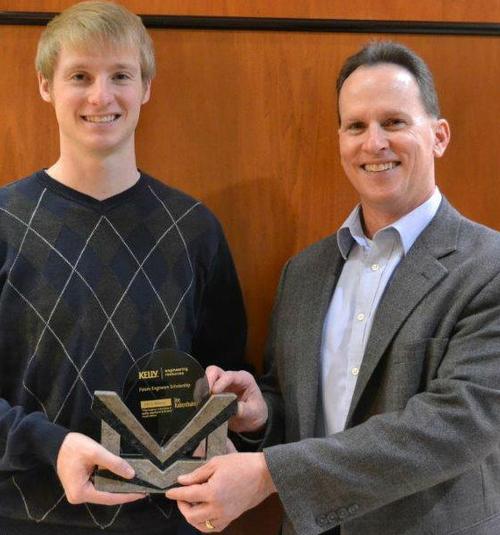National Engineers Week Gives Future Technologists an Edge
It’s National Engineers Week and host DiscoverE -- an arm of the National Society of Professional Engineers -- and other organizations with a vested interest in the field are not forgetting to include the next generation of aspiring and future engineers as part of the festivities.
February 25, 2015
Universities and companies alike are sponsoring science, technology, education and math (STEM)-related efforts aimed at encouraging and supporting students in their future studies toward careers in these fields either directly related to the week or in their own STEM promotional efforts, which have seen a substantial uptick in recent years.
Workforce solution provider Kelly Services officially is taking part in National Engineers Week by awarding a student attending the Rose-Hulman Institute of Technology located in Terre Haute, Ind., its Kelly Future Engineers Scholarship.
Albert Joseph Kaltenthaler -- who plans to graduate in 2016 with a bachelor’s degree in mechanical engineering with an aerospace emphasis -- received $5,000 to use toward tuition, fees, books, and room and board during the 2015 calendar year.

Workforce solution provider Kelly Services sponsors a scholarship program to help engineering students complete their college education. Tim McAward, vice president of the company (pictured with this year’s winner, Albert Joseph Kaltenthaler), said there is a “talent gap” in engineering in the United States.
(Source: Kelly Services)
Kelly Services has been formally supporting National Engineers Week since 2012, and considers STEM education an especially important component of its backing because of the “talent gap” in the field, Tim McAward, vice president of Kelly Services, told Design News.
MORE FROM DESIGN NEWS: Manufacturers Brace for Baby Boomer Exodus
“The increasingly global economy of innovation in which we live is driving the demand for the knowledge, skills, and abilities engineers possess,” he told us. “However, the United States is experiencing a growing talent shortage coupled with high demand for these careers. Not enough students are graduating in engineering fields of study and baby boomer retirements are worsening the talent deficit.”
Indeed, evidence of the latter was found in a recent survey by ThomasNet. To counteract these forces, “more programs need to be created to attract the next generation of engineering talent before high school graduation, and more needs to be done to support college students studying engineering complete their education,” McAward said.
MORE FROM DESIGN NEWS: Manufacturing Growth Threatened by Lack of Interest from Millennial-Age Workers
To that end, the Kelly Future Engineers Scholarship program is open to full-time second- and third-year college engineering students who are pursuing a degree at an accredited institution of higher education in the US or Canada. More information about the program is available on its website.
Meanwhile at FSU, engineers gathered last week to discuss 3D printing, one of the most disruptive and exciting technology innovations in recent years, as part of the university’s own STEM initiatives on the heels of National Engineers Week.
The university held a symposium on the topic called “Stacking Layers,” with 77 of the 450 registered attendees from its own College of Engineering, Ken Baldauf, director of the university’s Program in Interdisciplinary Computing, told Design News.
Interest in and use of 3D printing is increasing among departments at FSU, and this activity is cross discipline, which shows its diversity and potential, he said. Baldauf worked with FSU’s Office of Research on the symposium and said that 22 of the university’s departments -- as varied as theatre, art, communication, chemistry, law, and archeology -- are now using the technology.
“3D printing technologies serves as an inspiring technology for young minds and assists in engaging them with tough subjects in STEAM (STEM + Art),” Baldauf told us. “I see 3D printing technologies as a bridge for dynamic interdisciplinary research and education across all disciplines. FSU will be investing more in bringing these technologies to all students.”
While 3D printing machines are “fascinating to watch,” Baldauf added the real promise of this technology is in how it’s inspiring future engineers in other areas of design and invention. “The real creativity and innovation occur in the software and materials research,” he said.
Other official National Engineers Week STEM events will include Introduce a Girl to Engineering Day on Thursday, Feb. 26, which aims to present engineering to young women in a way that will encourage them to join the field. (More to come on that later.)
Elizabeth Montalbano is a freelance writer who has written about technology and culture for more than 15 years. She has lived and worked as a professional journalist in Phoenix, San Francisco, and NYC. In her free time she enjoys surfing, traveling, music, yoga, and cooking. She currently resides in a village on the southwest coast of Portugal.
About the Author(s)
You May Also Like



